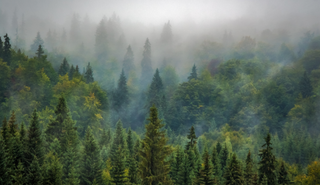According to researchers, drastic changes to forests and other environments that store carbon in soils and plants are becoming more possible in some areas all over Earth, with less carbon absorbed steadily by the “land carbon sink” offered by soil, trees, and plants. This study was reported in the journal Nature.

Image Credit: University of Reading
The scientists also state that the short-term impacts of increasing temperatures, farming on several susceptible landscapes, and deforestation mean carbon stores on land are less likely to recover in the future. This reduces the total storage capacity of the land to absorb carbon and sabotages international efforts to stop or decrease levels of greenhouse gases present in the atmosphere.
Dr. Patrick McGuire, a climate scientist working in collaboration with the Department of Meteorology and the National Centre for Atmospheric Science branch, both at the University of Reading, UK, was a co-author of the new study, headed by colleagues at CREAF, Barcelona, and Antwerp University.
We found that large regions of the world are vulnerable to sudden and dramatic changes to their landscape, because the ability of their ecosystems to absorb carbon starts to destabilize. For example, forest fires in California are more likely because of extremely dry and hot conditions caused by a hotter atmosphere. More fires means forest turns to scrubland, sometimes permanently. This reduces the land’s overall ability to suck carbon out of the atmosphere as it did before.
Dr. Patrick McGuire, Study Co-Author and Climate Scientist, University of Reading
Dr. McGuire continues, “This creates a vicious cycle as areas such as these become more vulnerable to the effects of climate change in the future.”
Unstable Carbon Storage
Scientists discovered that between 1981 and 2018, ecosystems all around the world transitioned through various phases, which ranged from low productivity, when plants could not absorb much carbon, to high productivity, when plants could consume more carbon.
The level of these fluctuations creates a bigger risk of destabilization, which increases the risk of abrupt landscape modifications as ecosystems cannot adapt to deforestation, climate change, and modifications to biodiversity.
The study was published on February 22nd, 2023. It discovered that the areas that are most at risk are generally warmer, have more cropland and less forest cover, and have experienced higher rises in temperature, which could be associated with an increase in adverse weather events like cold snaps and heat waves. The Mediterranean Basin, the west coasts of North and Central America, and Southeast Asia are the areas that are found to be the most at risk.
The scientists stated that these susceptible regions had formed a “memory”—defined as a “temporal autocorrelation”—implying that years with lower carbon uptake are possibly followed by more years where carbon uptake reduces even more. They say that the possibility of scrubland turning into a permanent landscape is more likely, and forests could be lost forever as less carbon is absorbed in regions where forestland dominates.
Global Variation
While several areas are at risk of sudden modifications in their landscapes, there are parts of the world where carbon absorption levels are steady and the collapse of ecosystems is less probable due to the carbon fluctuations.
This covers the Amazon’s tropical forests and parts of northern and central Europe, where carbon absorption capacity has risen. The scientists, however, advise that areas like the Amazon are posed with climate threats, such as future shifts in reliable rainfall patterns.
The researchers state these global changes could make it more challenging to predict the worldwide effect of schemes to absorb carbon, like planting trees, in helping the world to achieve carbon net-zero.
Dr. McGuire concluded: “Ecosystems on land currently absorb almost one-third of the carbon emissions created by humans. If they start to absorb less carbon, the earth’s natural ability to curb climate change diminishes. This means we may need to cut man-made carbon emissions even faster than we had previously thought.”
Journal Reference
Fernández-Martínez, M., et al. (2023) Diagnosing destabilization risk in global land carbon sinks. Nature. doi.org/10.1038/s41586-023-05725-1